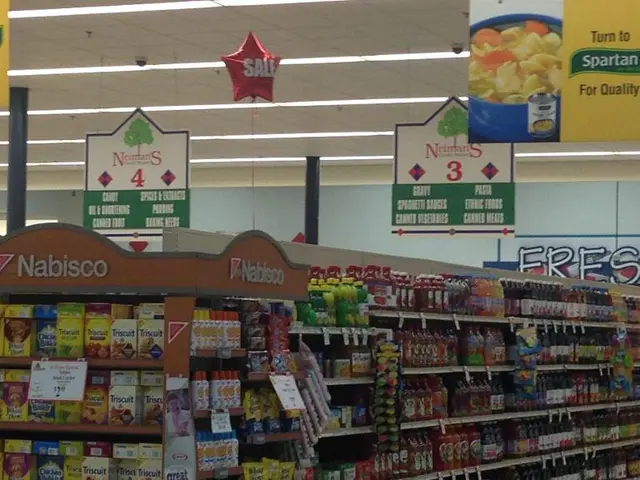Guide on Establishing and Expanding a Budget-Friendly Garden
Starting a Frugal Garden on a Budget
Gardening on a shoestring budget? Don't panic. With a little creativity and the right resources, you can have your own backyard bounty without breaking the bank.
We spoke to Donna Freedman, a lifelong gardener and frugal pro. She shares her best strategies for getting started and maximizing your garden's yield. Here are her top tips:
1. Plan it out
Before you dive into buying stuff, take a moment to plan your garden. Figure out where the sun hits at different times of the day, determine your growing area, and jot down your ideas. Donna recommends using the Garden Plant Calculator by Linsey Knerl to keep track of what you'll be growing.
2. Seed or starts?
Starting seeds yourself will cost you pennies compared to buying seedlings or mature plants. However, Donna suggests a hybrid approach: start some seeds for quick growth, but don't forget to grab four-packs of seedlings for sturdier, high-yield plants. You can find seeds at your local dollar store, libraries, or online.
3. Repurpose, reuse, reduce
You don't need fancy (expensive) equipment to garden. Be resourceful and think outside the box. Use empty containers, old lumber for raised beds, and worn-out clothes to tie up plants. If you're feeling ambitious, build a greenhouse out of scrap materials like discarded storm doors and old windows.
4. Score freebies
Poke around The Buy Nothing Project, NextDoor, Craigslist, or Freecycle to find garden tools, plants, or soil. You can also trade or ask for seeds with neighbors or other gardeners in your community.
5. Plant in waves
By planting in succession, you can enjoy a steady supply of fresh produce. Plant a row of lettuce or kale per week, and alternate between tomatoes, peppers, green beans, or whatever you fancy.
6. Protect your plants
Say goodbye to critters chowing down on your chard. Companion planting with flowers or herbs that repel pests can help, like marigolds, mint, or basil. Drape netting over berry vines or fruit trees to keep the birds, rabbits, and deer at bay. And don't forget to make a spray with chili peppers or insecticidal soap to ward off hungry bugs.
7. Make your own compost
Reduce waste and enrich your soil with kitchen and yard scraps, like grass clippings, dead leaves, sawdust, or newspaper. Vermicomposting is another great option, where you feed kitchen waste to worms in a closed bin. Check with your city to see if they offer any composting programs.
8. Mulch your garden
Mulch helps keep your soil moist, prevents weed growth, and reduces the need for watering. Use grass clippings, shredded dried leaves, or pine straw – all cost-effective options.
9. Save your seeds
Save seeds from mature plants to plant next year. The more seeds you save, the less you'll need to buy. Follow Oregon State University's Extension Service guide to learn how.
10. Preserve the harvest
Freeze, can, ferment, or dehydrate your produce to enjoy throughout the year. Resources like The National Center for Home Food Preservation provide user-friendly instructions on various methods. You don't need expensive equipment – borrow or rent what you need.
Don't let a small budget stop you from growing your own food. Start small, be resourceful, and enjoy the fruits of your labor (and savings)!
- For a budget-friendly garden, consider raised beds made from recycled lumber instead of purchasing pricier materials.
- Plant a variety of vegetables, herbs, and flowers in your garden to cater to different projects in food-and-drink, health-and-wellness, and landscaping, such as cooking, personal-finance, and home-and-garden.
- Composting is an organic method to enrich the soil and reduce waste, using items like coffee grounds, vegetable peels, and yard trimmings.
- By planning out the garden using resources like the Garden Plant Calculator, you can make optimal use of your space and ensure a bountiful harvest.
- Start seeds yourself with organic seeds found at local dollar stores, libraries, or online, but also consider buying four-packs of seedlings for faster growth.
- Embrace companion planting as a way to maintain a pest-free garden by interspersing plants that repel pests, such as marigolds and basil, among your crops.
- Mulching your garden helps conserve water and suppress weed growth, using affordable materials like grass clippings, shredded leaves, or pine straw.
- To maximize your garden's yield, plant in succession to ensure a steady stream of vegetables, herbs, and fruits throughout the season.
- Don't forget to save seeds from your mature plants to use for future planting, reducing your dependence on purchased seeds.
- To preserve your garden's harvest, consider farming practices like canning, freezing, fermenting, and dehydrating, found in resources like The National Center for Home Food Preservation. This not only saves money but also allows you to enjoy your produce year-round.








